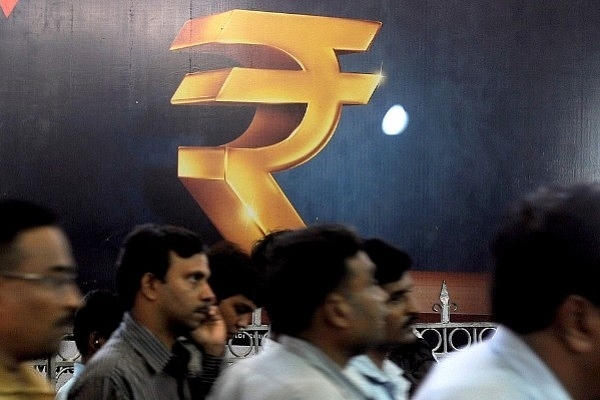
Rupee Decline: Why The 2013 And 2018 Episodes Are Vastly Different
The conflation of the 2013 and 2018 events comes from viewing the rupee solely against the US dollar, and not factoring in several other crucial components of the economic engine.
The rupee’s recent sharp decline to a record low against the dollar has raised some alarm. Predictably, there is chortling in some quarters, comparing the present drop to the plunge in 2013. While there are some similarities between the two episodes of rupee depreciation, the differences are vast. The Indian economy is in far better shape today: growth is stronger, inflation is much lower, and the fiscal deficit is smaller than it was in 2013. Partisan talking points aside, the conflation of the two events comes from viewing the rupee solely against the United States (US) dollar. A broader gauge of the rupee weighed against all currencies shows the stark difference between the two episodes. In 2013, India was among the so-called “fragile five” emerging market economies. Right now, India is among the strongest emerging market economies. Comparisons to 2013 border on the absurd.
A Closer Look At Rupee/Dollar Trajectory
The rupee is facing its steepest decline since 2013, although the present decline does not rival the 2013 drop yet. Moreover, the 2013 decline came on the heels of an equally precipitous drop in 2012, whereas, in comparison, the rupee had appreciated in 2017. Put another way, the rupee is not very far from where it was two years ago, but in 2013, it had lost more than 50 per cent from its level in 2011.
The other important point that is often missed in the discussion is that the rupee/dollar trajectory cannot be viewed in isolation from what is happening to the dollar with respect to other currencies. After all, India does not trade solely with the US. In contrast to 2013, the trade-weighted dollar index is presently amid a strong rise. In other words, in 2013, the rupee was declining against the dollar, while most other currencies were holding stead, whereas today the rupee is declining along with many other currencies.
Another way to look at the rupee is to consider the trade-weighted exchange rate of the rupee – the value of the rupee against a basket of currencies, weighted by their importance in India’s foreign trade. On this parameter, the difference between 2013 and now is stark. Back then, the rupee had collapsed nearly 30 per cent over two years and almost 15 per cent in the five months from April to September 2013. Presently, the trade-weighted rupee has been flat for four years and has dropped less than 10 per cent from its 2017 peak. It is as if we are comparing a hurricane to a monsoon squall.
Comparing the Economic Situations
Comparing the economic situation provides an even starker contrast than the trade-weighted rupee. First, consider economic growth. Currently, the gross domestic product (GDP) growth is clocking 7.7 per cent, possibly accelerating close to 8 per cent when the fiscal first-quarter numbers are reported. In 2013, growth was well under 6 per cent.
Second, and more important for the value of the rupee, inflation is much lower today than it was in 2013. Consumer price inflation was running above double-digit levels for much of 2013; now, consumer price inflation is close to 4 per cent. It is important to keep in mind that when inflation is high in comparison to other countries, the rupee will tend to decline in order to maintain competitiveness.
Third, the central government fiscal deficit was 3.3 per cent of GDP for the recently ended fiscal year, whereas it was 4.9 per cent of GDP in 2012-13.
Currencies of developing countries tend to be sensitive to fiscal profligacy. In that sense, the present fiscal restraint contrasts with the relative profligacy of the government in 2013.
Comparing the External Financial Vulnerability
The other proximate determinants of the rupee’s value – the current-account deficit, capital inflows, ratio of reserves to short-term external debt – all show a substantially healthier picture now. The current-account deficit is currently 2.6 per cent of GDP. To be sure, it has been deteriorating lately and is a little worrisome, although hardly anything to be alarmed about. However, coming into 2013, it was at 6.1 per cent of GDP and was running at 4.5 per cent of GDP in the first half of 2013.
Second, capital inflows – foreign direct investment and portfolio – are running about 30 per cent higher now.
Third, foreign exchange reserves, at around $400 billion, today are over four times short-term external debt, whereas in 2013, reserves were below $300 billion and below three times the short-term external debt.
What This Means
The rupee is far less shaky than it was in 2013 because both the economic fundamentals and the external financial indicators are in much better shape. In closing, nothing presents a sharper contrast than the judgment of the markets. In 2013, the Indian stock market tanked in relation to its emerging market peers. Today, it is soaring in relation to its emerging market brethren. Do the two situations look similar to you in any way?